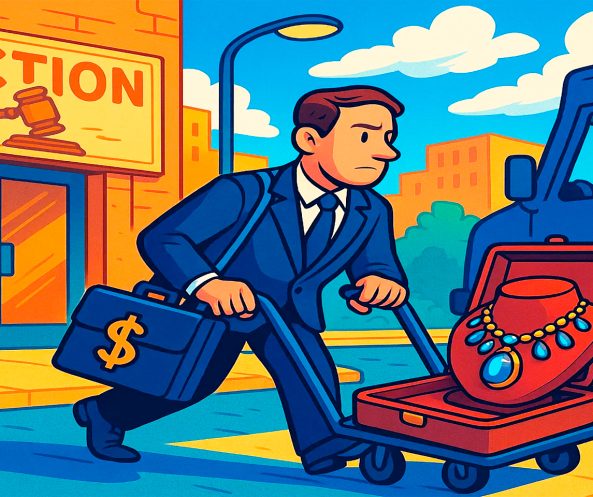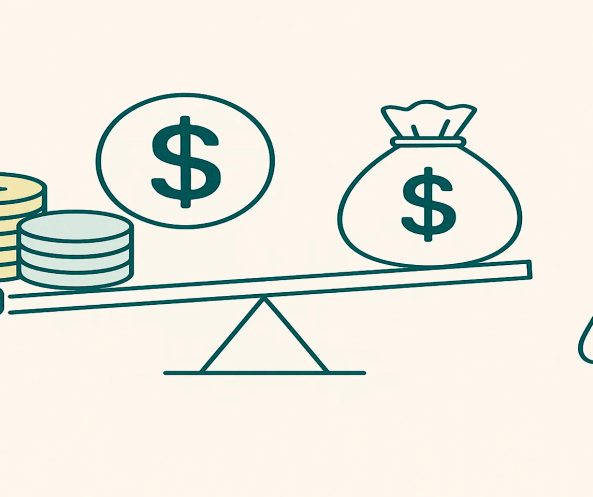Borrowing for Precious Metals in Economic Crises: Real Case Studies of Gold and Silver Protection
Investing in Precious Metals During a Crisis: Successful Case Studies
When economies stumble and currencies lose stability, investors often look for safety. Gold and silver have repeatedly provided that protection. In several historical and recent crises, borrowing to buy precious metals has even preserved capital when other assets collapsed. These are not stories of reckless speculation but of carefully timed decisions where metals shielded wealth during inflation, currency devaluation, and financial breakdowns. Looking back at these case studies helps explain why metals still hold a unique place in crisis strategy and how loans, when managed responsibly, can make the difference between loss and preservation.
Gold as a Shield in Hyperinflation
Periods of hyperinflation have been some of the clearest moments where gold safeguarded investors. When national currencies rapidly lose purchasing power, holding cash is destructive, while holding gold becomes essential. In several countries that experienced triple-digit inflation, individuals who borrowed in local currency to purchase gold effectively turned debt into a protective tool. As inflation surged, the value of their debts eroded in real terms while the value of their gold holdings climbed. This mismatch worked in their favor. The crucial factor was timing: entering before the full crisis unfolded allowed them to benefit when metals surged as citizens fled collapsing currencies.
Currency Collapse
In one instance, a regional investor borrowed modest sums in a weakening currency to buy gold bars. Within months, hyperinflation wiped out much of the loan’s real burden while the gold appreciated dramatically. When converted back, the holdings covered the debt and preserved purchasing power, proving the effectiveness of metals as a crisis hedge. The story shows how ordinary borrowing, in the right context, can act as protection rather than risk, a reminder that debt and value can move in opposite directions when inflation dominates economic life.

Silver in Industrial Shocks
While gold attracts attention in crises, silver has also played a strong role, particularly when industrial disruption intersects with financial uncertainty. During manufacturing slowdowns, silver prices have at times dropped initially, only to rebound sharply as demand for safe assets outweighed short-term weakness. Borrowers who used credit lines to acquire silver during those dips often found themselves well-positioned once prices recovered. The dual identity of silver as both an industrial commodity and a safe-haven asset creates volatility, but in moments of crisis that volatility can translate into rapid gains for those who borrowed wisely and sold into recovery.
Case Example: Short-Term Recovery
In one case, a group of traders accessed short-term bank loans to buy silver after a steep industrial downturn. Within a year, silver regained value as investors turned to metals, and the profits exceeded repayment costs. This demonstrated how even more volatile metals can serve defensive roles when timing aligns with market recovery. The example also underlines that silver requires a sharper eye for timing than gold—it demands confidence that a rebound is likely and discipline to sell when the window of opportunity appears.
Borrowing Against Declining Real Estate
Another pattern in crisis periods has been investors borrowing against assets like real estate, which were losing value, to buy gold. When property markets froze or collapsed, owners unable to sell still leveraged their holdings to access cash. Some allocated those funds to precious metals. In downturns where housing values stayed low for years, gold prices rose, balancing losses. The trade was not risk-free, but for disciplined investors it preserved wealth. This shows how reallocating borrowed funds from declining assets to metals can soften the blow of downturns across sectors.
Case Example: Defensive Diversification
In a major financial crisis, several investors mortgaged properties and used part of the loan to purchase gold. While real estate remained depressed for half a decade, the gold holdings doubled in value within two years, covering loan costs and offsetting capital losses elsewhere. The case highlighted how metals function as a counterweight in portfolio management during downturns. It also reflected how investors can use leverage strategically, not for expansion but for preservation.
Timing and Discipline as the Core Factors
The successes of borrowing to buy metals during crises share certain traits. Investors did not borrow excessively relative to income or assets, ensuring that repayment remained manageable. They also acted before prices peaked, entering when signs of crisis were clear but before panic buying drove metals too high. Crucially, they treated loans as tools, not as opportunities for speculation. The distinction matters: responsible borrowing created protection, while excessive leverage would have created exposure. These case studies illustrate that success required discipline, preparation, and an understanding of how metals behave under pressure.
Shared Lessons
Every successful example carried the same warning—borrow only what can be repaid, and never assume metals only move upward. Crises can create temporary volatility even in gold, and patience is often needed to allow the strategy to work. Those who survived downturns with their wealth intact were not the most daring but the most careful, proving that restraint is often the most effective form of defense.

A Forward-Looking Reflection
Looking to the future, similar opportunities may appear again. Rising debt levels, currency volatility, and global instability keep the appeal of metals strong. If another sharp inflationary wave or credit crunch hits, some investors may use loans to secure gold or silver positions as a defensive move. The growing role of digital gold platforms and instant lending apps could make access faster, but the principle remains the same: timing and discipline matter more than convenience. Technology will make the strategy easier to execute, but the risks of overextension will remain as real as ever.
The Digital Borrower
Imagine a future where an investor uses a fintech app to borrow instantly during a spike in inflation. With a few taps, funds are transferred into fractional gold, stored securely and tracked digitally. The app automatically sets repayment terms based on expected income flows. If gold rallies by 30% in six months, the borrower covers repayment and secures gains, turning a small, controlled loan into a shield against wider economic losses. This scenario shows how digital tools may amplify the effectiveness of old strategies, but also how easy access can tempt users into borrowing too much without fully grasping the risks.
Overextension Risk
In contrast, consider another user in the same system who borrows too aggressively, chasing silver with the hope of quick recovery. If silver drifts sideways instead of rising, repayment obligations eat into income, creating stress. Here, technology makes borrowing seamless but does not change the underlying rule—metals protect best when used as a hedge, not as a gamble.
Conclusion
Borrowing to invest in precious metals during crises has produced real success stories. Gold and silver have preserved wealth when currencies collapsed, industries slowed, or real estate markets crashed. But each case underlines the same conditions: careful timing, modest borrowing, and a defensive mindset. These stories are not invitations to speculate recklessly—they are reminders that metals, when combined with disciplined borrowing, can protect capital when other strategies fail. For investors seeking stability in uncertain times, they show that even debt can become a shield if applied with care. In the future, technology will change how quickly we act, but it will never replace the need for discipline.










 Financial Analyst & Luxury Asset Lending Specialist
Financial Analyst & Luxury Asset Lending Specialist